The recognized History of Art is marked by a movement, our blue-chip Art Stars and our institutions. Often more interesting and dynamic, the smaller histories of a regional art community are established by the galleries, art spaces and the people who support them. The many art communities of Los Angeles throughout its times have woven a colorful and innovative narrative.
The period that straddles the new millennium was exceptionally busy and fertile. A lack of galleries created a vibrant alternative art scene, which challenged the ways in which we view and engage with art. Miller Durazo Contemporary Artists Projects was one of the “most established” of these many alternative art spaces.
Artist Robert Miller, empowered with a BFA from Otis and an MFA from UCLA, started his own curatorial exercise with Miller Fine Art. In 1995, he joined forces with pal Martin Durazo who was earning his MFA at UCLA after graduating from Pitzer College with a BA.
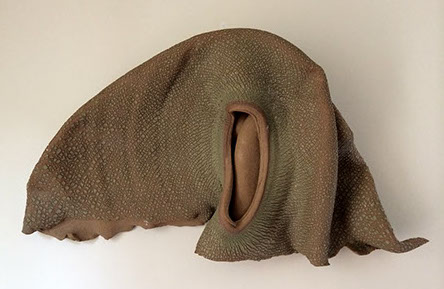
Robert Miller
Every artist has a day job and Miller was managing real estate properties. Through his grapevine, he secured a space in an old Mediterranean-esque commercial building in the heart of a busy Jewish ghetto on Pico at Robertson Boulevards. Both active in the art world, the two friends, adventure-minded curators, created Miller Durazo Contemporary Artists Projects.
Powered by enthusiasm, wit and discovery, the gallery was an instant success and became an immediate fixture on the city scene. Over a long run, the busy gallery participated in two international art fairs, more than 60 solo shows and multiple group exhibitions. Their annual open call, the $99 Show, attracted superstars such as Paul McCarthy, Don Suggs, Peter Hailey and Mary Kelly.
Like all things that end in Los Angeles, the price per square foot flew over the moon and the neighborhood was gentrified. Miller and Durazo had new projects to pursue. Newly married, Robert Miller was making art and expecting twins. Martin Durazo was stepping up his game; he had joined the stable of famed gallerist Susanne Vielmetter.
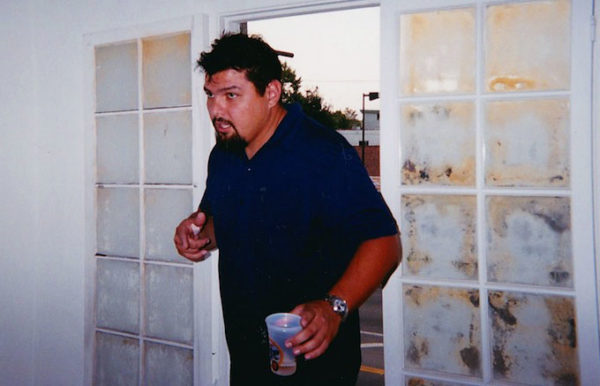
Martin Durazo
Recently, the innovative history of Miller Durazo Contemporary Artists Projects was on view at Rio Hondo College with the retrospective show Lift Off. A culture was celebrated and colleagues reunited. Los Angeles, the great shining city by the sea, has changed much since Miller Durazo closed its doors. Most interesting, their stable of artists are still making art with the same passions of their past.
Following are thirteen artists and the recollections of their life and times with Miller Durazo Contemporary Artists Projects.
Micol Hebron
Feminism 4D (Living feminism in all directions, in all times)
Facebook and Instagram
“I showed a suite of photographs in one of their “$99 Store” exhibitions, back when the 99 Cent Stores were having their heyday. It was a series of video stills from my Fountains video. Artist Christopher Haun bought one set, and I believe Chris Acuna-Hansen bought another. It was one of my first shows outside of school and one of the first works that I sold (the other being a ceramic sculpture of planes intersecting buildings, eerily foreshadowing 9/11, six years later).
“It was very exciting and was one of the events that gave me an inkling of what it meant to be a ‘real’ artist: making, showing and selling work. I felt ‘professional.’ Robert Miller and Martin Durazo were so amazing because they were totally bananas, breaking all the rules, but they were also serious. Their integrity and passion about making and showing work was infectious and inspirational. They expected a lot, and in so doing, elicited a lot from those who showed at MDCA. There was tremendous energy.
“Art Star Skip Arnold was hanging around in his black leather motorcycle jacket and white tank top. He was one of the first artists I met in real life, after having learned about him in school. There’s something magical and amazing about getting to live within the pages of a history book – and among the characters who were presented in your classes as famous, important and influential.
“The mid-late 90’s was an interesting time in LA and at UCLA. It was in the wake of the Culture Wars, and in the middle of Identity Politics. UCLA had a truly all-star faculty line-up, and there was a LOT of attention on the school at the time.
“The energy and excitement was high, as was the pressure. Jason Rhodes was Paul McCarthy’s protégé; the Khedoori twins were seducing everyone with their thoughtful and critical work. (All the undergrads were trying to remember which one of them was dating Jason.) Jennifer Schlossberg was working on what would become her tell-all book about the shenanigans at UCLA at the time; Charlie Ray was getting stoned with students on his sailboat; Paul McCarthy had brought a young, then barely known artist named Murakami to guest teach in the New Genres department. (Murakami’s class was my first TA-ship.)
“Life in the grad studios was intense and awesome. We seemed to be there all the time. Everyone was very serious about their work and their practices, and we virtually lived in the studios.
“During that time period there was a robust scene of alternative art spaces. The club scene in Hollywood was amazing then, too. Michael Arata was doing the One Night Stand exhibitions in hotels; Dave Muller was doing Three Day Weekend. Mary Leigh Cherry was doing exhibitions in her garage in Venice.
Max Presneill
Artist & Curator
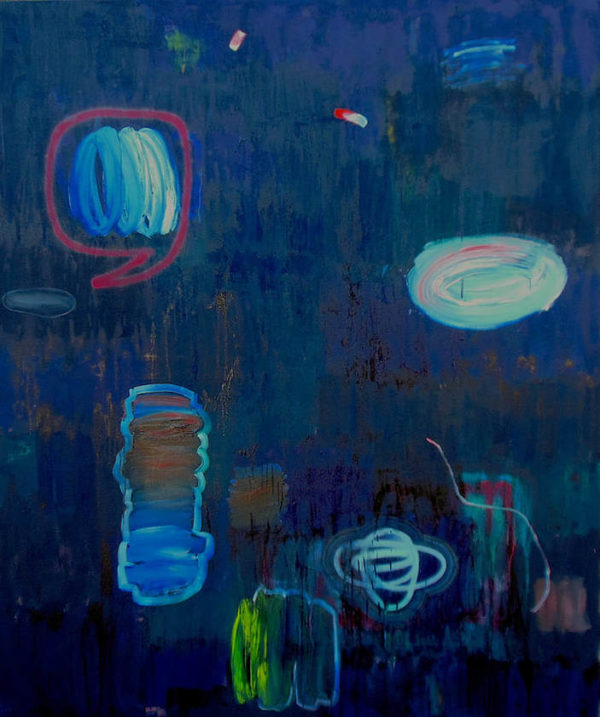
Max Presneill
“I moved to California in 1997 without knowing anyone here. As I tried to engage with the LA art scene, slowly and self-consciously, there were a number of times when more established people in the scene were rude or dismissive, although most people were very nice.
“Then I bumped into the Boys, Martin and Robert. I finally met some peeps who were unpretentious but knew their stuff and were having a blast! They were inviting, inclusive and I felt like I had finally found a small section of the tribe I wanted to be a member of.
“These were folks to get fucked up with and to hang with, even when no art was in sight. A tight group of people seemed to meet and become friends during their openings – a bringing together of the waifs and outcasts, the insiders and the ambitious, looking for stress free comrades to shoot the shit with.
“I started Raid Projects back then to try and follow the same kind of DIY support for artists as these two were doing. That helped integrate me into their scene and led to showing with both and becoming friends with Martin, Robert and Habib from POST. We have all shown with each other, at each other’s spaces. My bubble-view is that POST, MDCA and Raid Projects were the scene for emerging artists back then. It should have had its own soundtrack!
Mike Vegas
“Martin Durazo and I had worked together at Cooke’s Crating, too. He was either still at UCLA or freshly graduated when he and Robert started doing the gallery. I remember the space was on the second floor. You had to walk up a thin set of stairs to get up there. Three rooms: a small room that faced onto Pico, a smaller room that was in the hall, and a larger room that faced onto the parking lot. They also hung stuff in the hallways. Usually they did group shows, or split up single artists into each room.
“I started going to all the openings there. They were always a party. And it was a group of people like me: young, naive, starting out, and still believing in the power of art. (You only get to be like that once in your life, and I miss those days.)
“Nobody was really concerned about selling. We were all happy to show. We all dreamed of being art stars someday. I have fond memories of sitting in the back of Jared Pankin and Kelly McLane’s pick up truck drinking cheap beer in the back parking lot. Most of us would hang out there partying. It was usually pretty hot upstairs in the gallery space, especially in summer.
“My solo show was in July of 1998. I had showed some of my porno collages with Patricia Faure a few months before in a large group show that included Baldessari and Salomon Huerta. (It was called “Some Lust.”) Martin had seen the work and really liked it.
“I hung 132 individual pieces on the walls of the large back room. Each was a 6″ x 9” unframed piece of paper with a porn cut out in the middle. I hung them with photo corners, a pain in the ass to do. They covered the walls like wallpaper, in a sort of grid pattern.
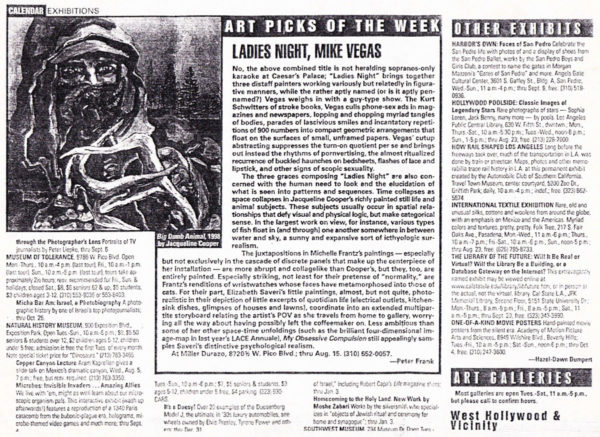
LA Weekly “Pick of the Week,” July 31–August 6, 1998
“A couple of weeks later Peter Frank made the show “Pick of the Week” in the LA Weekly. (July 31-August 6, 1998 issue.) It was the first review I ever got, and I believe it was the first review that Miller Durazo got.
“And I always felt like Robert Miller was the adult in the relationship. He was the one who made it work. Martin was the troublemaker. And then there was Bob. Who was a Hollywood agent? I never knew what his relationship to the gallery was. Saw him at the Rio Hondo opening and it brought back alot of memories.
Anders Lansing
Oil/Flashe on canvas
Miller Durazo shows: Solo: Vacation, 1997; Group: Drawplay, 1999; Plumb, 1997; Winter, 1997
“Great openings in the parking lot out back.
“My Art Star moment was when my painting appeared in the background of Martin’s MFA film. “Suck it Up” was shot at the gallery.
During the ’95 to ’03 period, what was your life like? “Living the life, post-divorce…studio downtown and shacking up with my girlfriend in Hollywood.
What was your art like? “I was making minimalist finish-fetish paintings that were then inserted into environments that I built. How has your art evolved now? The work is less minimal and deals with a different type of environment
I think along with POST, Miller Durazo created a space for exhibiting artists that was not dependent on sales but ideas. Martin and Robert are good guys.
Martin Durazo
Painting
Instagram
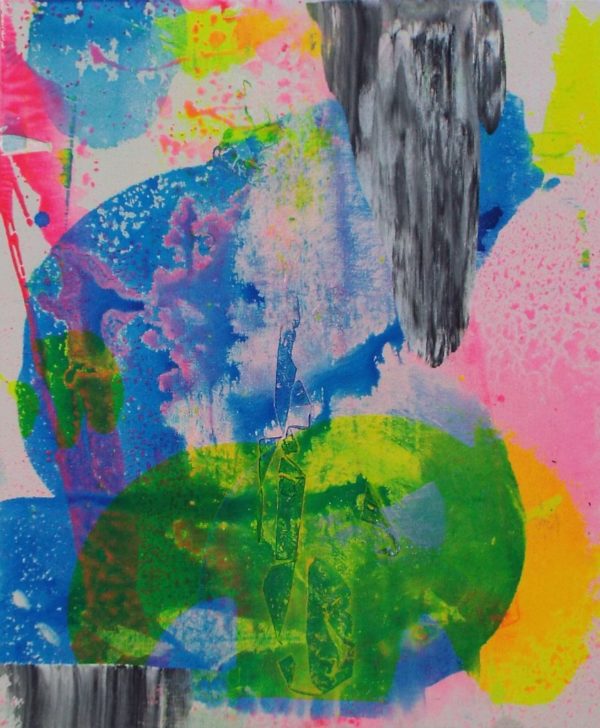
Martin Durazo
“I think the first show was fantastic, so many people came to support. It was a group show called Winter and a solo project by Michael and Magdalena Frimkess. I remember looking out the rear window of the gallery, down to the parking lot and seeing 300+ people.
“The other show that stood out was the debut of Ruby Osorio’s girl drawings. A smash hit and the beginning of a great career.
“I was really touched when several of my professors at UCLA gave work to our annual $99 dollar show, Paul McCarthy, Peter Halley, Don Suggs, and Mary Kelly to name a few.
“From 1995 to ’98, I was an MFA candidate at UCLA. Afterwards, I taught and had shows at POST, the Richard Heller Gallery, Otis College of Art and Design and Susanne Vielmetter.
“While directing the gallery, I had the pleasure of working with so many artists and we all shared our vision of art and creativity.
“I have continued to curate the occasional show and exhibit. Most recently, a solo show at the Barbara Davis Gallery in Houston, and a group show in Riga, Latvia, curated by Popper Publishing at Gallery Alma.
“The time of MDCA seems so long ago but working with Robert Miller and all the participating artists on LIFT OFF reminded me how much of each effort was rooted in love and sharing.
Michael Arata
Sculpture, activities, photo, drawing, painting, installation.
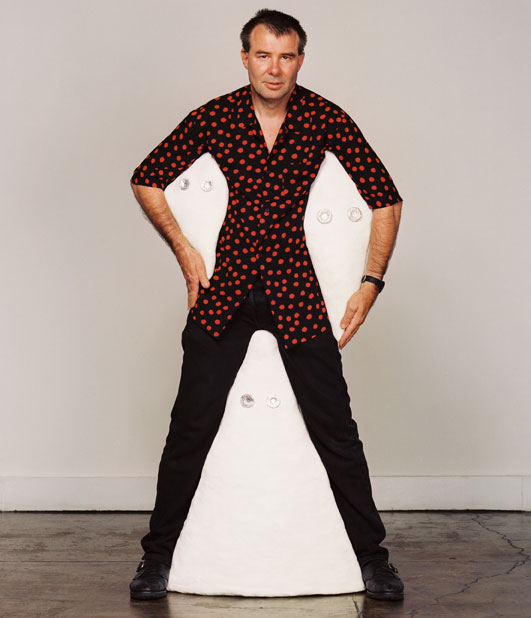
Michael Arata
Your shows at Miller Durazo? “Killer Rainbows. I mostly remember random openings. It was a nice gritty time to get together with other artist and complain, dialog, plan and socialize. It was more like an art club.
“Life was bleak in the mid-nineties. I was teaching for low income and the future did not look promising. Things got much better as we approached the millennium. I was making “Pet Space” sculpture and photos. This included the colorful and grayscale rainbows. Content oriented.” How has your art evolved now? “Same, just more edgy content.
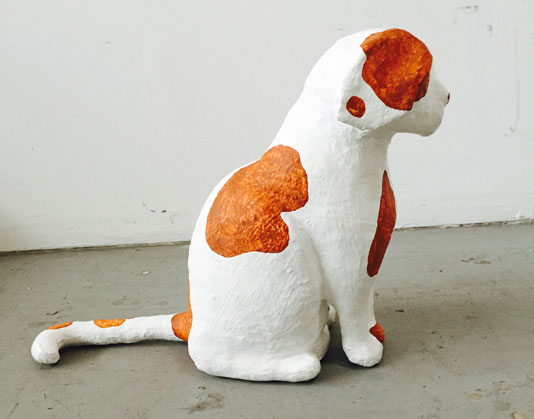
Michael Arata
“Miller Durazo filled an alternative niche, like the “One Night Stand” shows we were doing at the Farmer’s Daughter Motel on Fairfax. (A series of rooms were rented for curated artists to exhibit their work.) There were about six or seven alternative for-profit spaces at the time.
Ruby Osorio
Drawing/Painting
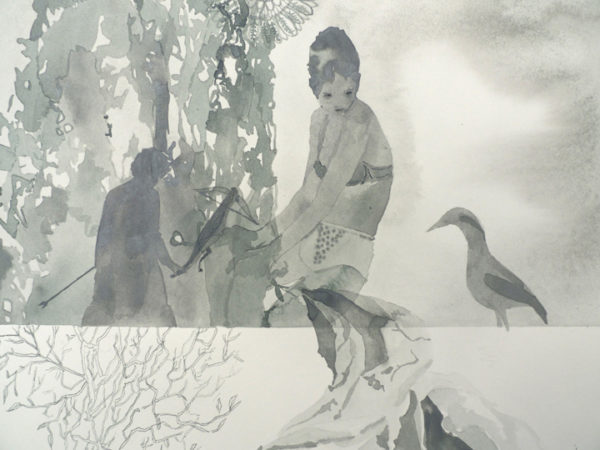
“I had my first real solo show at Miller Durazo. I remember that I had been making a lot of these small, intimate drawings for myself and never really thought about making them public, but they asked to show a batch of them. I had no idea what to expect from the exhibition.
“On opening night, Miller Durazo sold almost all of the drawings. It was an exciting time. There was a lot of social energy around the space, and for me, there was this first sense of the joy of making and sharing work with a wider audience.
“Miller Durazo opened up a lot of creativity and opportunity for me as a result of that show.”
Emily Wagner
Works On Paper
“Miller Durazo was a hot bed of young artists on the cusp of being discovered. They took risks, and sought off the beaten path talent. A lot of amazing artists came out of there and went on to make significant waves in the art world. I went on to being repped at a little Chinatown gallery, Acuna-Hansen.
“Martin worked closely to push me, always, and challenged me at every turn. Just when I thought I was done, he would say, great start! He was my mentor, and still is, if I ever need an eye or an ear. I trust him implicitly. Robert was always lovely, warm and supportive. He brought a real family element to the space and always made the artists feel worthy and deserving. It was truly special in that way.”
Kelly McClane

Kelly McClane
Jared Pankin
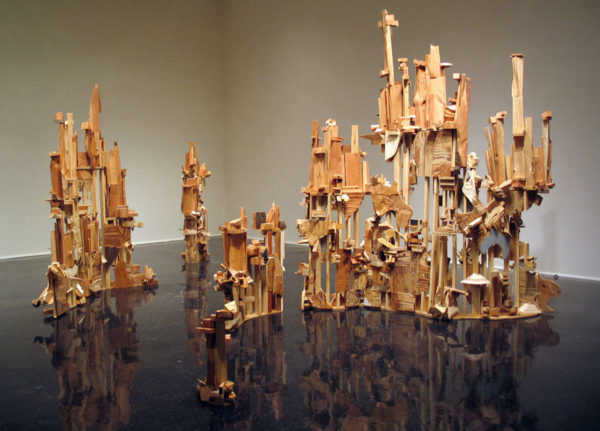
Jared Pankin
“My name is Jared Pankin. I am a sculptor. I work with wood, glue and lots of sawdust and fake animal parts. I also am a master potter. I live with my wife of 26 years, Kelly McLane. We live in the woods, across the street from the southernmost point of the Sequoia National Forest. I went to graduate school with Robert Miller and have kept in touch with him over the years. If he opened a gallery today, Kelly and I would show with him in a heartbeat. That’s how much we like and trust him. Martin was a great addition because he was and still is tapped into the art world beat.
“Kelly and I had a solo show at Miller Durazo in 1997 along with artist Eve Wood. One thing that stands out the most about those years was you went to the openings not only to support the gallery, but all your friends were there. Beer in the parking lot, sitting on the tailgate of Martin’s recent pick up truck, after that is was El Coyote or Robert’s place for more beer. Everyone was welcome, and even though we live in the woods, when we do go to LA, we see old friends we met at Miller Durazo.”
Seth Kaufman
Artist
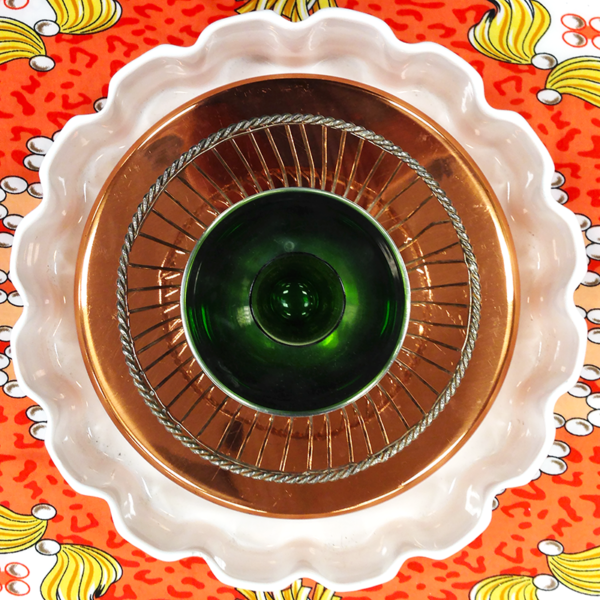
Seth Kaufman
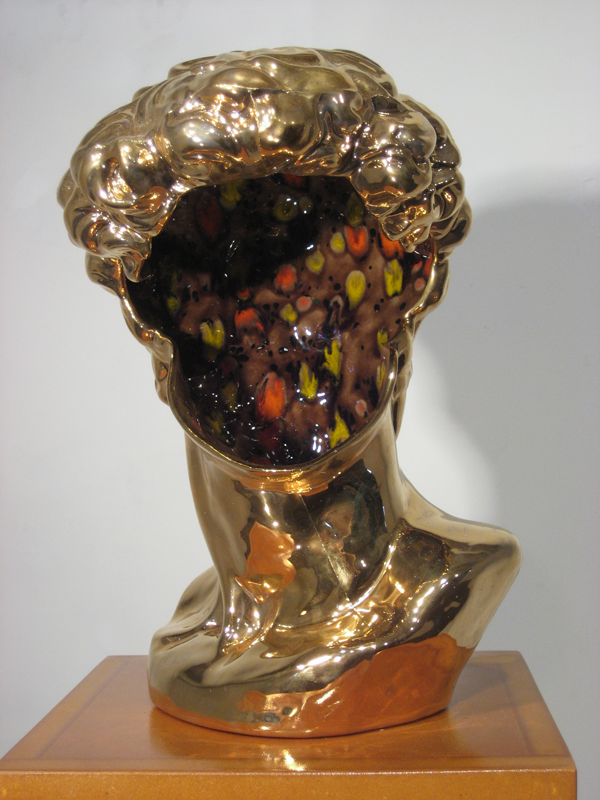
Seth Kaufman 2
“It was an intimate space that seemed womb like, more akin to a private collector’s lair than a public art gallery… as I walked up the stairs I remember having the feeling of entering into a safe space, a private club, populated by likeminded art lovers, away from the pressures of daily life and even in and around the competitive art world. It felt like something smart and sweet was happening.”
Gordy Grundy
Painter
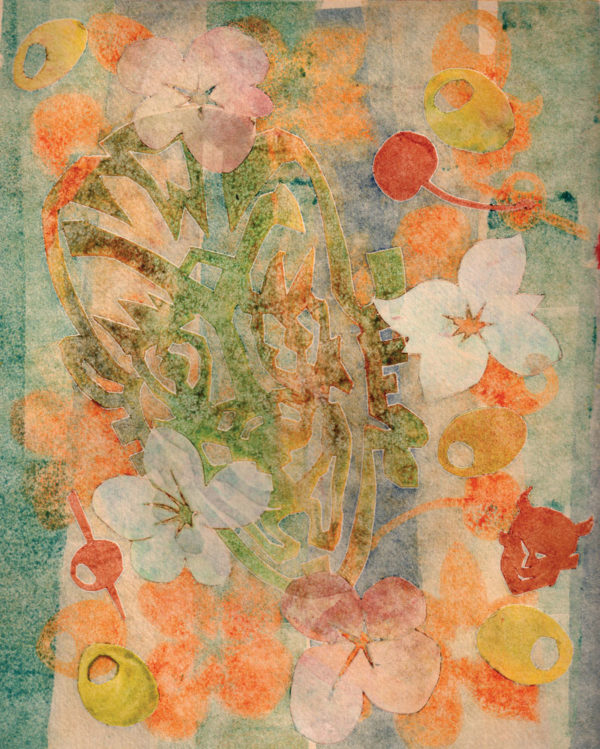
Gordy Grundy
When Robert Miller reintroduced me to two small abstract paintings for the Lift Off show, it was like an old hook-up had called to inform me that I was the father of a teenager. After the shock and confusion, the fog of the past began to clear. It was like seeing a dear old friend.
In the days of Miller Durazo, the LA art world was growing in size and relevance. Grad schools were pumping out artists and the territories were clearly defined. The characters were outsized. The stories scorched earth. The art world was humming an international tune. The culture in the petri dish was vibrant and buzzing. Los Angeles, in all her glory, was shaking and Miller Durazo Contemporary Artists Projects was smack in the middle of it.
Maura Bendett
Instagram and Artillery Magazine, 2016 feature story
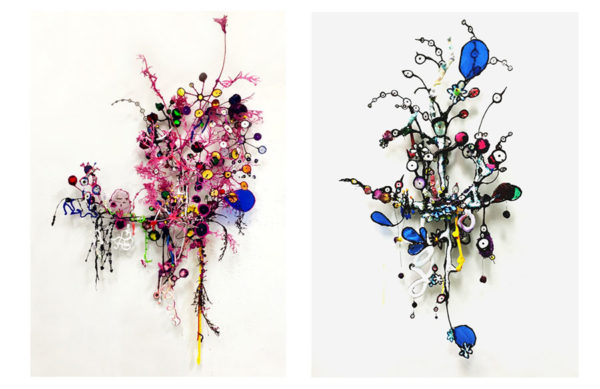
“Between 1998-2000, I went to most of the openings at Miller Durazo, because I liked hanging out with Robert and Martin, and all my friends were in shows there. The openings were really fun and involved a lot of drinking. This was when beer and wine were cheap, and you couldn’t have an opening without them, it was expected.
“Miller Durazo was down the street from where I lived with my boyfriend. So when Robert asked me to participate in the $100 auctions that he and Martin organized at their gallery, of course I said, ‘Yes.’
“I loved the vibe at Miller Durazo, and the building/gallery itself. It seemed to spring up and exist alongside the old butcher shops, Jewish bric-a-brac shops, synagogues, upstairs in the classic Pico at Robertson neighborhood, and I felt at home. It was small and intimate and a perfect location to hang and socialize. I think these small galleries (Miller Durazo, POST, Domestic Setting, TRI, etc.) were instrumental in fostering connections among young developing artists. Where else could we go to meet each other and connect?
“I realize how awesome and simple my life was back then between 1995-1999. Pre-internet, it was so easy because the art world was small and all the emerging artists in LA seemed to know each other and hang out in a few galleries:
MDCA (Martin and Robert), Domestic Setting (Bill Radawec), POST (Habib Kheradyar), TRI (Rory Devine), LASCA (Carl Berg), Sue Spaid Fine Art (Sue Spaid).
“I was in my mid-late 30’s, worked odd jobs, was beginning to teach and my boyfriend and I lived month to month. We were always broke, but I didn’t care because I had an awesome studio on Washington Boulevard at Crenshaw (now called West Adams), and all I wanted to do (and did!) was make art, show it, and hang out at openings.
“It really was an idyllic time, you could easily drive to three or four different openings in one night, from MDCA to POST downtown, drinking at each opening and very little traffic! I feel really grateful that I lived in LA and got involved in the art world in the 1990’s. It was a special time, because mainly it was before the internet. We still used slides! I still had a pick-up truck with a stick shift! I was super busy and I was constantly in shows, for like five to six solid years.
“The opening of the LIFT OFF show was really fun, catching up with old friends. It’s very heartening to see my peers continue to make art and I feel really grateful that I lived in LA and got involved in the art world in the 1990’s.”
“Given all of the changes to our world and the difficulties of a life in the arts, it is very heartening to see that most of my peers are steadfastly making art. It is the life we have chosen.”
— –+– —
Today, Robert Miller is a tenured professor and gallery director at Rio Hondo College, the site of Lift Off. He continues to work and exhibit his ceramics.
Martin Durazo continues to show locally and internationally. The celebrated Barbara Davis Gallery in Houston, Texas represents him. LINK: http://www.barbaradavisgallery.com/artists.html
This reunion of artists, all kindred souls, demonstrates the dynamic and calling of a long life in the arts. No matter how high-minded the pursuit, friendship and beer are always at the heart of it all.
—————————-
Gordy Grundy is a Pacific-based artist. His visual and literary work can be found at www.GordyGrundy.com

